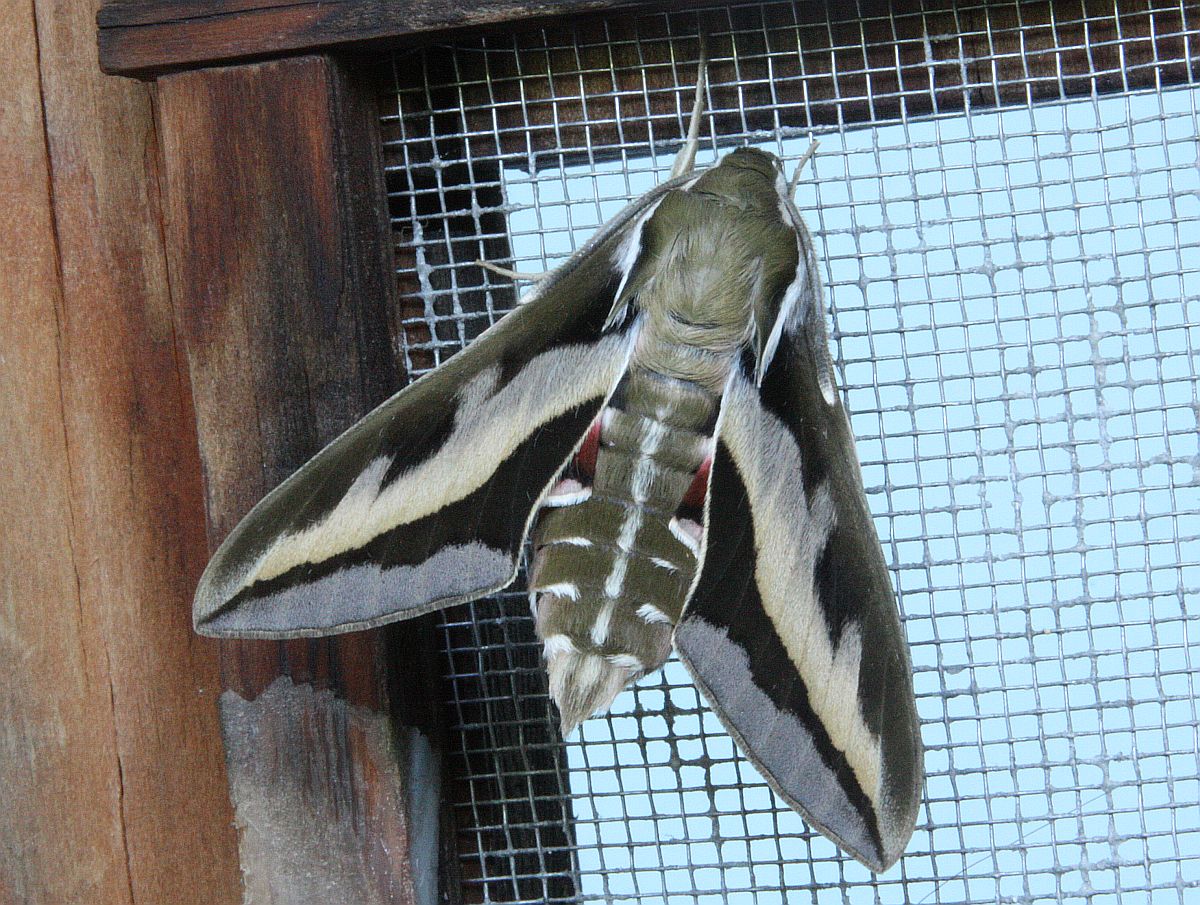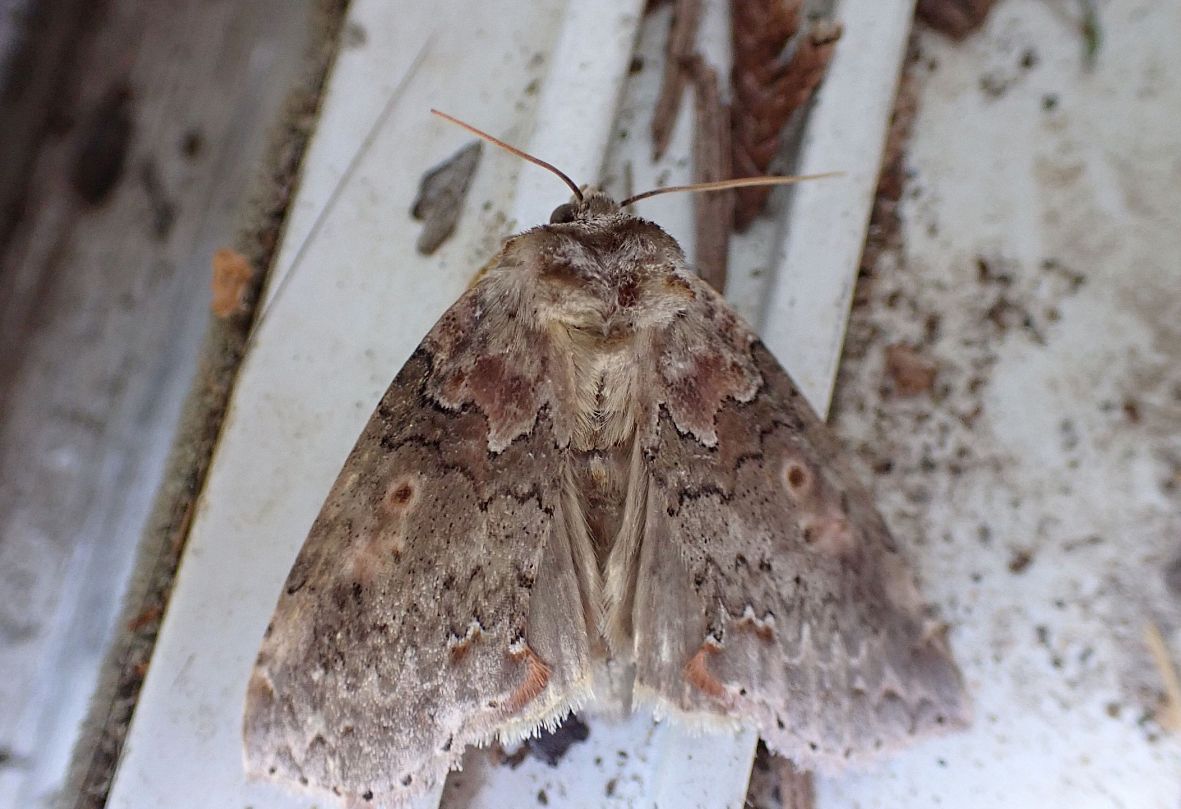2022 June 30 afternoon
2022 June 30 afternoon
Jeremy Tatum writes: Some viewers have noted that moths have been rather scarce this year compared with other recent years. I hope the one shown below may compensate to some extent. Reared from a caterpillar found on Willowherb in the Martindale Valley in July last year, the adult moth emerged today.

Bedstraw Hawk Moth Hyles gallii (Lep.: Sphingidae) Jeremy Tatum
The spellings gallii and galii are to be found in the literature. Which is correct? The name comes from the plants known as bedstraws Galium sp., which is one of the larval foodplants. Therefore, it ought to be galii, oughtn’t it? The species was first described and distinguished from the Elephant and Spurge Hawk Moths nearly 250 years ago in an obscure and long-defunct German journal. The author, named von Rottenburg, for some reason that is not at all apparent, spelled it, wrongly, gallii. The Rule is that we must use the spelling used by the author in the original description of the species, even if the author spelled it “wrongly”. By adhering to this Rule we can be sure that the species that we are talking about is the same species as the one originally described by the author. Thus, although we could say that the “correct” spelling is galii, the spelling we must use is gallii.
Another wrinkle to this is that the original author’s name is often (usually) spelled Rottemburg. However, the spelling in the original publication was Rottenburg.
I thank: Rob Cannings for finding the reference (journal and year) of the original publication; Ryan Glenn of UVic’s McPherson Library for – amazingly – actually finding the 1775 publication; and Jochen Möhr for translating it from German.
Rosemary Jorna writes from Kemp Lake that the moth (which has a very long name) shown below showed up in her garage this afternoon.

Pseudothyatira cymatophoroides (Lep.: Drepanidae – Thyatirinae) Rosemary Jorna
